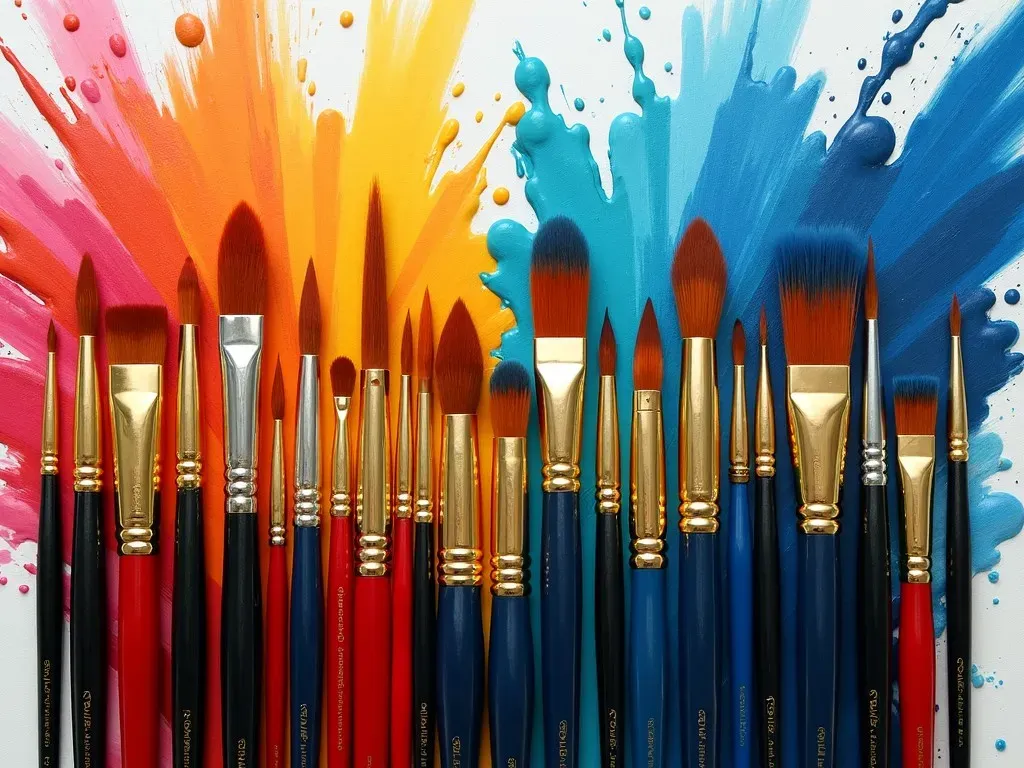When it comes to creating breathtaking oil paintings, having the right tools is essential. An oil paint brush set can significantly influence your painting experience and the quality of your final artwork. Choosing the best oil paint brushes tailored to your style prevents frustration and ensures smoother strokes and sharper details.
Understanding Oil Paint Brushes
Oil paint brushes differ from traditional brushes used for watercolor or acrylics. They typically feature firmer and stiffer bristles, which enable them to handle the dense nature of oil paints more effectively. Common materials used to make oil paint brushes include:
- Hog bristle: Ideal for thick applications of paint.
- Sable: Soft and springy, perfect for fine detail.
- Synthetic fibers: Durable and versatile, often mimicking the qualities of natural materials.
Here’s a quick overview of the different types of oil brushes and their uses:
| Brush Type | Ideal Use |
|---|---|
| Filbert | Great for blending and making strokes with curves. |
| Flat | Best for sharp lines and bold strokes. |
| Round | Perfect for detail work and fine lines. |
| Fan | Excellent for texture and foliage. |
| Angular | Great for precise edges and corners. |
Top Oil Paint Brush Sets
Here are some of the best oil paint brush sets available in the market to suit various needs and budgets:
1. Princeton 6500 Series Synthetic Bristle (4-Piece Set)
- Description: Features durable synthetic bristles designed for oil paint applications.
- Best For: Beginners and professionals seeking a reliable and affordable option.
2. Artify 15-Piece Chungking Bristle Oil Paint Brush Set
- Features: Natural hog bristles offer fantastic paint retention and application.
- Best For: Artists who need a variety of brush types for different Techniques.
3. Winsor & Newton Series 7 Kolinsky Sable Brushes Set
- Advantages: Made with high-quality sable hair for maximum control and precision.
- Best For: Fine detail work in more intricate pieces.
4. Trekell Oil Brush Set
- Composition: Contains a range of brushes from hog bristle to synthetic fibers.
- Best For: Artists who value a comprehensive set for various paint applications.
5. Artecho Paintbrush Set
- Details: Includes fine-tipped brushes, perfect for miniature painting and fine details.
- Best For: Artists focused on detailed work.
Reference Video
Factors to Consider When Choosing an Oil Paint Brush Set
When selecting an oil paint brush set, several factors come into play:
-
Bristle Type: Natural fibers like sable and hog bristle can provide better control and paint pickup but can come at a higher price. Synthetic brushes are more affordable and can be quite effective as well.
-
Brush Shapes: Different shapes serve different purposes. A good mix of flat, round, and filbert brushes will allow flexibility in creating various styles and techniques.
-
Handle Length: Longer handles are typically used for oils and offer more reach, while shorter handles provide better control for fine detail work.
-
Price Point: Determine your budget before diving into the options available. More expensive brushes usually offer better quality but there are many great budget options too.
Here’s a breakdown of popular brands and their respective price ranges:
| Brand | Price Range | Quality |
|---|---|---|
| Princeton | $10 – $50 | High |
| Artify | $20 – $40 | Good |
| Winsor & Newton | $15 – $100 | Premium |
| Trekell | $10 – $60 | High |
| Artecho | $10 – $25 | Good |
Best Practices for Maintaining Your Oil Paint Brushes
To extend the life of your oil paint brushes, proper care is essential. Here are some maintenance tips:
- Clean After Use: Use a solvent like turpentine or odorless mineral spirits to clean the paint off your brushes after each painting session. Avoid letting paint dry on your brushes.
- Shape the Bristles: After cleaning, reshape the bristles to maintain their form.
- Store Properly: Lay brushes flat or hang them upside down to prevent damage to the bristles.
Frequently Asked Questions (FAQs)
What is the difference between watercolor and oil paint brushes?
Oil paint brushes are stiffer and firmer to handle the heavier consistency of oil paints, while watercolor brushes are soft and flexible.
How often should I replace my oil paint brushes?
The longevity of your brushes depends on their use and care. High-quality brushes can last for years if maintained well; however, synthetic brushes might need replacement more frequently.
Can I use oil paint brushes with acrylic paint?
Yes, many oil paint brushes can be used with acrylics, but make sure to clean them thoroughly to avoid contamination.
What is the best oil paint brush set for beginners?
The Artify 15-Piece set is often recommended for beginners due to its variety and affordability.
Where can I buy quality oil paint brushes?
You can purchase oil paint brushes from art supply stores like Dick Blick or online platforms like Amazon.
Conclusion
In conclusion, investing in the right oil paint brush set not only enhances your painting abilities but also allows you to express your artistic style. By understanding the various types of brushes available and how to care for them, you’ll be well on your way to creating stunning oil paintings. Whether you’re a seasoned artist or just starting your creative journey, the right brushes can make a world of difference in your artwork.
